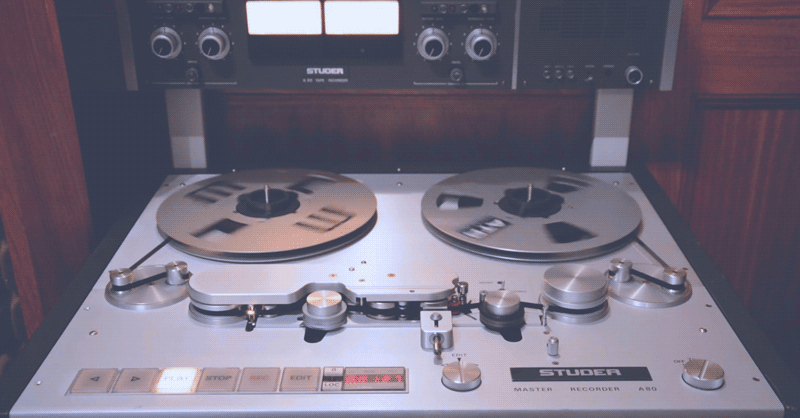
8 Bizarre Recording Experiments That Ended Up on Hit Records

Experiments are the mother of invention.
Nothing changes if you do something the same way over and over.
Music production has come a long way since early recordings. All thanks to a few forward-thinking artists, producers and engineers.
The tracks in this list are proof that the risks you take, and the decisions you make, between inspiration and mastering are what make good records great.
Here’s 8 bizarre recording techniques that defined the hit records they were on.
Michael Jackson – Billie Jean
Thriller. It’s one of the best records of all time.
Quincy Jones and Michael Jackson is a production partnership made in heaven.
But lesser known is the audio engineer Bruce Swedien. He’s equally responsible for the iconic sound of Thriller. His pursuit of the perfect sound is shocking—there are 91 unique mixes of ‘Billie Jean’ alone.
Swedien also used many homegrown techniques.
For example: the “don’t think twice” lyric that ended up on the final version of ‘Billie Jean’ was recorded by getting Michael to sing through a 5 foot cardboard tube. No post-production needed.
Tool – Crawl Away
Sylvia Massy cut her engineering teeth in the early L.A. metal scene. Her portfolio later increased to include seminal albums from Johnny Cash, Slayer and Danzig.
But her most well known mixing and engineering was her work with Tool.
Massy attempted to capture the feeling of Tool’s live performances—especially the vocals of Maynard James Keenan. Massy often went to extreme measures to capture the sound she thought suited the record. While recording vocal takes for Tool’s “Crawl Away,” Massy was unsatisfied with the screams.
[adbutler zone_id=”291816″ secure=”1″ type=”asyncjs”]
After multiple bad takes she told Keenan to go outside and run around the studio 5 times. When he got back he was out of breath and angry—a combination that led to the perfect scream on the final recording.
10cc – I’m Not In Love
10cc were flat out studio wizards. Their list of experimental recording processes is dizzying. But of all their strange studio tricks none is more bizarre than the sugary whoosh heard through out their hit ‘I’m Not In Love.’
10cc recorded members of the group singing just the word ‘ahhh’ for three weeks straight and recorded it to tape. The aim was to create a soundscape of backing vocals that could run forever and layer with the other instruments no matter what note was needed.
When all was said and done they had layered 256 voices onto 16 tracks. Each voice in the chromatic scale was loaded into the mixing desk. As the song changed, the faders were raised or lowered to fit the song. This allowed them to play the mixing board like a voice synthesizer. Which is why no record before it sounded quite like it.
The Crystals – Da Doo Ron Ron
Phil Spector’s recording techniques inspired an entire generation of audio-heads.
Spector’s most famous contribution to recording is his “Wall of Sound” approach to beefing up audio. The concept is simple: combine multiple performances to create a great wall of layered sound. Spector would use pianos, guitars or any other instrument he wanted to create a controlled pop symphony of multiple overdubs.
Although overdubbing and layering are commonplace in music today, In the time that Spector was recording the concepts were new. The ‘Wall of Sound’ approach helped Spector’s productions stand out on the weaker AM radio signals that were the norm in that era.
His engineering of ‘Da Doo Ron Ron’ is a key example of his “Wall of Sound” technique. The presence of sound on this recording was unmatched for its time.
The Tornados – Jungle Fever
Joe Meek blazed the trail for processes we take for granted today like reverb, delay, sampling and overdubbing. Without his eye and ear for experimentation, we simply wouldn’t be where we’re at today in recording.
One of Meek’s stranger experiments can be heard at the start of ‘Jungle Fever’ by the Tornados. At first listen it sounds like a panther growl. But listen again and it’s clear that it’s something else completely: Joe Meek’s pet canary.
Meek recorded his pet bird to tape and then slowed it way down to get the effect you hear on the final record. Sadly, the bird is not credited for its contribution.
The Beach Boys – Good Vibrations
Brian Wilson is a recording savant.
Wilson was notorious for recording his tracks in pieces from multiple sessions. After he had multiple recordings of each session, he would cut them up and splice them together into a fully realized song.
The effect this had on the records was strange but groundbreaking. Subtle shifts in mood and groove exist through out the Beach Boys later catalogue because of it.
In addition to experimenting with tape techniques, Wilson also mixed in interesting instruments that were uncommon in rock. On ‘Good Vibrations,’ the wee-ooo wail heard at the start of the chorus is often mistaken as a Theremin.
But in reality, it was an experimental instrument made by Paul Tanner called a Tannemin. The Tannemin was a synthesizer that applied the same concept as a trombone to the Theremin idea.
His design made it easier to use than the Theremin. Wilson’s ear seemed drawn to these types of experimental sounds that may have seemed out of place.
But something clicked, because the album lives on as one of the most iconic records of all time.
The Talking Heads – Once in A Lifetime
While Brian Eno is an accomplished musician himself, his engineering and production skills are equally as impressive.
The work he did with The Talking Heads is an exercise in experimental recording strategies.
Eno introduced the group to a multiple rhythm style. Each band member would start on a different count. This technique lets each part of the song flow in and out of one another in unique ways.
Additionally, Eno had each band member record their parts on ‘Once In A Lifetime’ without knowing what their bandmates had recorded. They played each part in isolation from one another. Eno then mixed the ’blind overdubs’ into the original track for effect. What results is a song that is fluid and fragmented all at the same time.
Joy Division – She’s Lost Control
Martin Hannet’s obsession with perfection birthed the iconic Factory Records sound of Joy Division, the Happy Mondays, and many others who were fortunate enough to be around him during his prolific engineering years.
If perfection isn’t possible, no one ever told Hannet. His pursuit of it seemed to be his sole reason for living.
Even though the records he worked on were immaculate when they were finished, his process put the bands he produced through hell.
During the recording of Joy Division’s ‘She’s Lost Control,’ it’s rumoured that Hannet forced drummer Stephen Morris to assemble his drum kit on the studio roof to get the perfect drum acoustics.
Whatever he did, it worked.
Experiment and then experiment again
To make something that will truly stand out, you have to take some risks. These engineers did and it left an impression on music that will never be erased.
If your process never changes, neither will your sound.
Leave your comfort zone and experiment every day. If you think it, try it.
Gear guides, tips, tutorials, inspiration and more—delivered weekly.
Keep up with the LANDR Blog.



